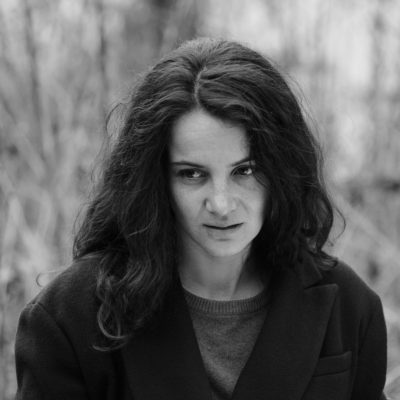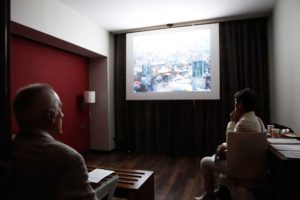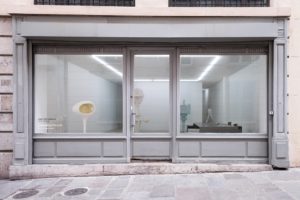
— Log in to watch the artist video if you have been given an access
- Artist
- Anne-Charlotte Finel
- Title
- La Crue
- Year
- 2016
- Duration
- 6 min 32 s
- Format & Technical
Single channel, loop, HD video, colour, sound
5 + 2 AP
- Music
- Produced by
- Postproduction
- Sound Mix
- Photography
- Photography
Anne-Charlotte Finel has dedicated her latest works to water in various states. In La Crue (The Raise), the protagonist is water perpetually falling, overflowing, accompanied by the electronic music of Luc Khedarmand, as if simulating that “the image sounds”. This suggestive combination of image and sound gradually produces a hypnotic effect in spectators, inviting them into the freedom of a trance, but also creating the sensation of falling into an unknown abyss.
Steady camera shots begin with a crystal-clear picture in an intense hue of blue. As the film progresses, the materiality of its images is adulterated in what seems like an apologetic exercise in poor images and glitches, darkening the screen until it melts into pitch black. As it becomes grainier, the game of textures evokes computational synthesis, transforming the image from abstraction into painted precision. These transitions might remind us of Steina and Woody Vasulka’s experimental practices from the early 1970s.
Finel is an example of work based on daily temporality; she films at night, at dawn or at dusk. Her work method consists of waiting until things happen, thus inviting us into possible anticipation, which requires patient contemplation. Within this anachronism, in the era of hyper-velocity and the manipulated image, resides the reflectiveness of her film. In it, she displays her ability to dwell on different alternatives and problematize reflection on factual truthfulness.
Filming locations are never revealed, which converts them into possible landscapes from her memory, or into what Henry Corbin calls “the imaginal realm”. Moreover, the images are modified, the colours are manipulated, and pixels appear, as well as glitches. The image becomes an “illicit fifth-generation bastard of an original image”, as Hito Steyerl said, but also an absolutely intentional action. It is in that sense that we are able to recognise La Crue as an act of resistance and opposition. In it, technology is understood as a tool or an instrument, as a form of agency in and of itself, one that is capable of generating and modelling its own environment.
Eugenio Cortés
Stills




